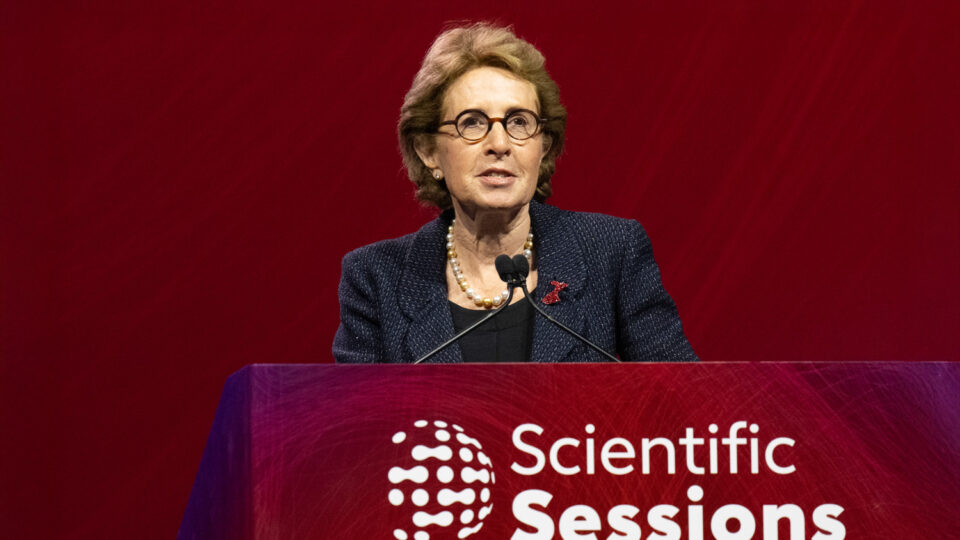Each year, first-of-their-kind procedures are performed by surgical teams at the Pediatric Congenital Heart Program at Hassenfeld Children’s Hospital at NYU Langone. Notable cases include using a femoral artery homograft in a modified Blalock-Thomas-Taussig shunt (BTTS), applying a novel approach to the Norwood operation for right aortic arch in hypoplastic left heart syndrome, and retaining a patent ductus arteriosus in a newborn to bridge time to heart transplant.
Here, cardiothoracic surgeon T.K. Susheel Kumar, MD, director of the Pediatric Heart Failure and Transplant Program, reflects on a notable complex case and shares his insights from taking risks to advance patient care.
Physician Focus: Of the many novel procedures that you’ve been involved in, which one stands out as being particularly memorable?
Dr. Kumar: One case that comes to mind is that of a 22-year-old patient with stenosis of a single coronary artery following an arterial switch procedure as an infant. We used a femoral artery homograft for that repair. Using the graft was a unique approach that had never been described before, and we got an excellent result of a widened, normal-looking artery.
“Using the [femoral artery] graft was a unique approach that had never been described before, and we got an excellent result of a widened, normal-looking artery.”
T.K. Susheel Kumar, MD
As an infant, the patient had undergone a switch procedure for dextro-transposition of the great arteries (d-TGA). He began to experience severe chest pain and shortness of breath during exercise as a teenager. Our Adult Congenital Heart Disease Program determined he had developed a narrowing of his single coronary artery. The artery split into two, with the right coronary artery being patent and the left coronary severely narrowed at its origin.
Dr. Ralph Mosca and I performed the surgery together. We knew going in that providing the patient with a durable repair was a top priority. The patient was a young and extremely active individual—he was an avid runner and biked nearly every day to work. We wanted him to be able to enjoy that lifestyle. During the surgery, we realized that unroofing was not an option due to his anatomy. Bypass grafting was also not a great option at such a young age. We elected to enlarge the left coronary artery using the femoral artery homograft. The procedure went smoothly, we got an excellent outcome, and the patient is doing great. [Read more about the case here.]
Physician Focus: Let’s discuss the process of innovating in surgery. How do you approach the inherent risks of performing a new procedure?
Dr. Kumar: We aren’t afraid to innovate. But at the same time, we are not reckless. We weigh the pros and cons of a new procedure and spend considerable time thinking about it before actually executing it. We think of every possible step where things could go wrong, and discuss how best to prevent those pitfalls or overcome them if they do happen. In doing so, we minimize errors and maximize outcomes.
“Success in any field is a mere reflection of the processes in place—be it sports or pediatric heart surgery.”
I would also say that we do not hesitate to take the expert advice of our adult cardiac surgery colleagues when the situation demands. We tap into their expertise on conditions more commonly seen in adults than children. That is one of the advantages of being attached to an adult hospital. We collaborate well here at NYU Langone, and I think that’s one of the standout reasons why we are able to surge forward with more confidence.
Physician Focus: What motivates you to keep pushing boundaries in pediatric heart surgery?
Dr. Kumar: As a comprehensive program, we want to be able to cater to all the medical needs of our patients. We do not want to turn away a patient who comes to our doorstep for lack of medical or surgical expertise. We strive for the success of every child, no matter what it takes. When this happens repeatedly, it fosters a culture of excellence in the group. Success in any field is a mere reflection of the processes in place—be it sports or pediatric heart surgery. At NYU Langone, the processes we’ve established over time are key to our successful outcomes.






